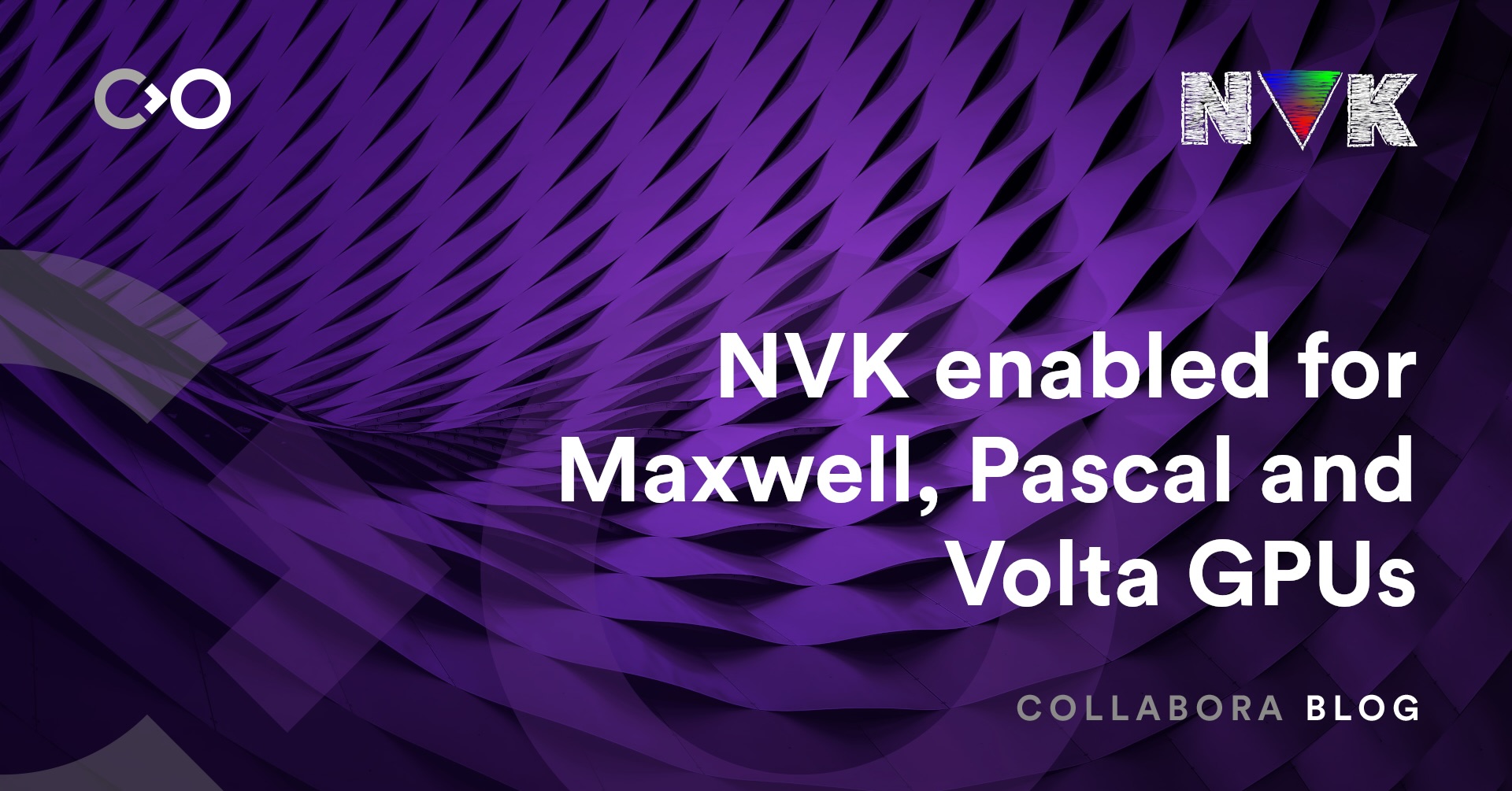- cross-posted to:
- linux@lemmy.ml
- cross-posted to:
- linux@lemmy.ml
I’m gonna believe it when I see it on the benchmarks and in use
They should all work, though I have no idea how quickly. Khronos lists the GeForce 800, 900, GTX 700, GTX 900, GTX 1000 & TITAN V series GPUs as Vulkan 1.4 conformant with the driver.
Any performance benchmarks or good gains? Better Wayland support would be nice also.
It doesn’t say anything about performance. But they now support Vulkan with Nouveau, so it can now be used even if OpenGL is not available or broken.
The blog post only me tioned that the driver now supports the GPUs, which I think should be believable, as the GPUs are listed as conformant on Khronos’ website.
If you have had problems with a Wayland compositor when using Nouveau with one of the cards, it is possible that it might work now, if the compositor supports Vulkan.
Vulkan is normally faster than OpenGL, but I don’t know much about the state of NVK & Nouveau’s OpenGL driver for the cards. I just know the API versions they support and that NVK cannot reclock them if Nouveau can’t, so I can’t say anything about performance.
I’m just wondering if they can deliver the same experience as AMD GPUs with Mesa graphics. In terms of Wayland support and being performant.
They’ll still be slow, as I really doubt that anyone will manage to reclock the cards, ever. Hopefully, now that they’re supported by the NVK driver, which is likely getting a lot more attention than Nouveau’s OpenGL driver and supports Vullan, performance might improve.
According to Collabora (main developers of NVK, I think) & a few other sources (I haven’t run any benchmarks myself), NVK + Zink (OpenGL on Vulkan) is a bit faster than Nouveau on newer cards, for which it is now the default. The older cards still default to Nouveau, but as I understand it, it’s just in case there are issues with them.
So, they are a bit nore compatible now. They should also be a bit more performant now (if you use Vulkan instead of OpenGL & NVK works) or soon(er or later) (when NVK gets faster or the cards switch to Zink on NVK).
Nvidia drivers are a bit confusing on linux, so I’ll list them here, just in case (at leas as far as I understand them):
Kernel drivers:
Closed source official driver
Open source official driver
Nouveau Nova (WIP)Userspace drivers:
Official driver (supports both officiql kernel drivers)
Nouveau (OpenGL only, supports the Nouveau kernel driver)
NVK (Vulkan only, OpenGL via Zink, supports the Nouveau kernel driver, will support Nova)Kernel drivers run in the kernel & talk with the GPU, while userspace drivers talk with the kernel drivers, as far as I understand.
Both NVK & Nouveau’s userspace driver are part of Mesa.
All the Nouveau drivers are often just called “Nouveau”, but they’re all located in different places. (Nouveau also has a Xorg driver, which isn’t important here.) Also, the package for NVK is (at least on some distributions) called vulkan-nouveau (Arch) or similiar.
TL;DR: The situation should be at least a bit better now and it should be easier to improve. Also, Nvidia drivers on Linux are confusing.
P.S.
I have a device with an intel integrated GPU & one with a Nvidia 2000 series GPU. Everything works with the intel one (and I would assume AMD), but Nvidia sometimes causes problems on the other device.It was some time since I tried NVK on it, but performance was much better with the official drivers. It’s probably much better now, and I’ll probably have time & motivation to test it in a week or few, after getting a few other things out of the way first.
Depending on your card, luck, setup, needs & distribution, Nvidia could just be a minor annoyance (enabling non-free repositories and/or some manual configuration with the official drivers, or not quite enough performance with Nouveau) to larger problems (broken greeter/DE/WM/etc., problems with secure boot signing or something else with the official driver or horrible performance or lack of support for extensions with Nouveau).
If you’re looking for a GPU, I’d recommend avoiding Nvidia. Official drivers work pretty well now (most of the time), but can cause headaches and the amount of time I’ve spent troubleshooting is not completely insignificant. There are still a few (pretty small) problems I haven’t been able to resolve. This is in contrast to the intel iGPU, with which I don’t remember any problems.
Edit/P.P.S.
Sorry for the wall of text.Thanks for such a detailed explanations. That’s what I meant, I would love to avoid official drivers headache that causes you to avoid recommend Nvidia. Still there are some things that you cannot avoid it. Things I have in mind are better than AMD / Intel GPU with Mesa:
- Blender
- ML / AI / CUDA and so on
- DaVinci Resolve (and other creative stuff like Blender above)
- RayTracing
- DLSS (FSR is catching up but this is #1) I would love the Nvidia support just to be stable.
for the encoding and decoding I would choose Intel. For gaming AMD as I’m currently right now with Bazzite.
At least the situation will get better.
Nouveau’s kernel driver is a horrible mess, so I’m looking forward to Nova, if it ever gets ready.
For older (pre-about-RTX 2000-series) cards, the kernel driver had to do a lot, and Nouveau had to reverse engineer most things. Now, Nvidia has moved most of the proprietary magic into something called the GSP (GPU System Processor), which is a small processor (RISC-V, IIRC) which does many things the kernel driver did previously, like reclocking. This, in addition to the official open kernel drivers should make developing a new FOSS Nvidia driver a lot easier. RedHat’s Nova (and I think Nvidia’s open driver) only support cards with a GSP for this reason.
NVK is very impressive for such a new unofficia Nvidia driver in my opinion. If I remember correctly, they said that they’ll focus more on optimization now that it’s conformant.
When/if Nova is ready, it will finally be possible to use a Rust graphics driver stack on Linux outside of Asahi.
If you have any questions remaining, just ask.
Edit: So the closed source GSP firmware blob has 3 “good” points:
- The closed source parts are limited to inside the GPU.
- It moves a lot of work away from the kernel driver.
- It allows open source drivers to support HDMI 2.1 & later.
The HDMI Forum decided some time ago that HDMI was too open. Now, for the newer versions, the license doesn’t allow open source implementations. Nvidia gets around this with proprietary GSP firmware inside the GPU (even with official open source drivers, not sure about Nouveau) and Intel with GPU firmware or an internal adapter, depending on the GPU (if I’ve understood correctly). Only AMD doesn’t support the newest HDMI version.




